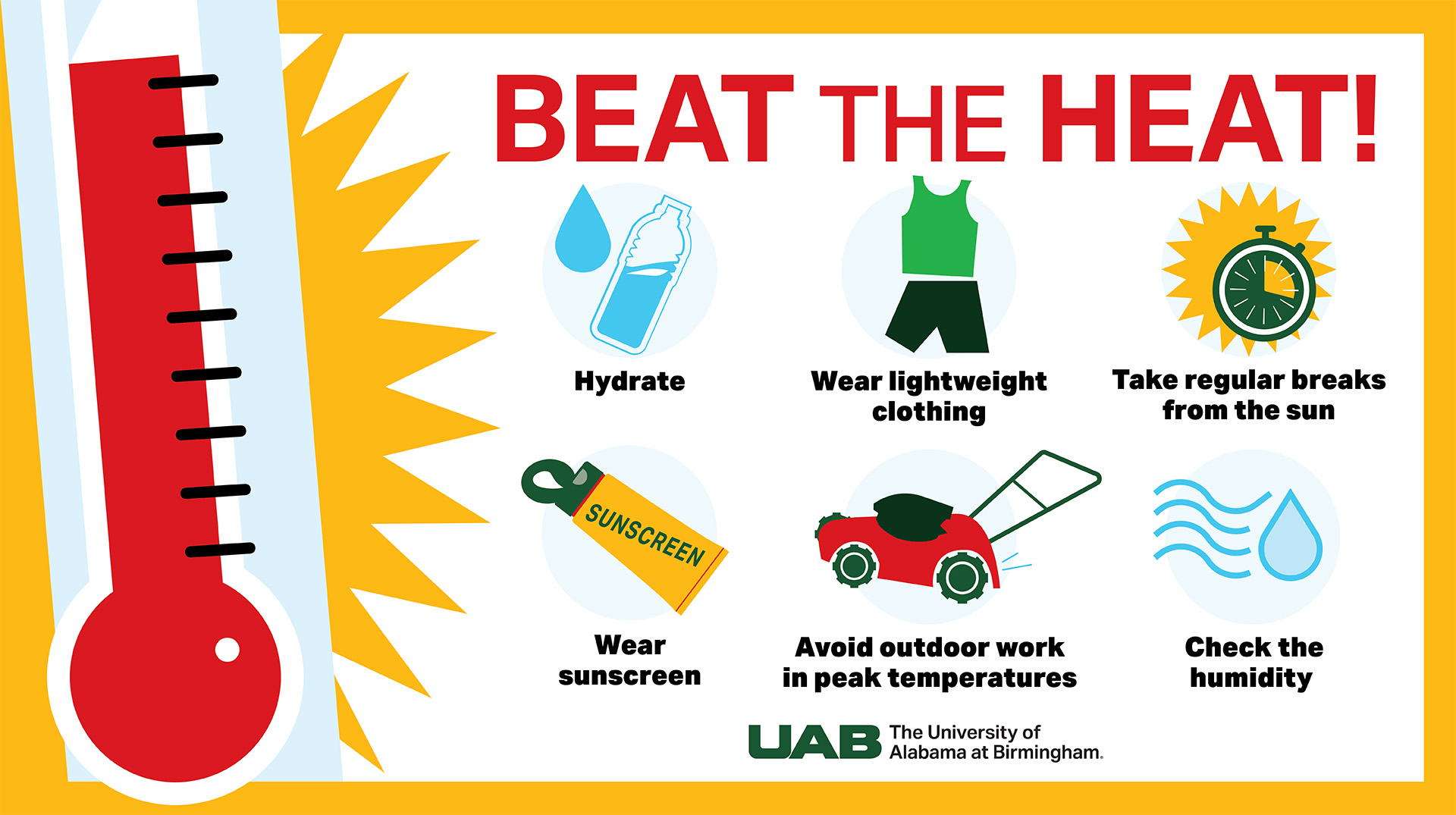
Once the heat index passes 80 degrees Fahrenheit, the National Weather Service advises people to exercise caution outdoors to minimize their risk of heat-related illnesses. As temperatures rise across Alabama, experts at the University of Alabama at Birmingham say staying aware of the symptoms of heat-related illnesses is critical.
Heat-related illnesses
According to Andrew R. Edwards, M.D., interim chair of the UAB Department of Emergency Medicine, the most common heat-related illnesses in the state are heat rash and heat cramps. However, there are more severe conditions that become more likely as temperatures climb.
“Less common, but significantly more severe, are heat exhaustion, heat stroke, heat syncope and rhabdomyolysis,” Edwards said.
 As temperatures rise, a UAB Emergency Medicine physician shares warning signs and prevention tips for heat-related illnesses.Signs of heat-related illness
As temperatures rise, a UAB Emergency Medicine physician shares warning signs and prevention tips for heat-related illnesses.Signs of heat-related illness
Symptoms vary depending on the specific condition. Heat rash and heat cramps may lead to heat exhaustion, which indicates the body is not regulating temperature properly. This can progress to heat stroke and other serious complications.
General signs of heat-related illnesses:
- Heavy sweating
- Fatigue
- Dizziness or lightheadedness
- Nausea or vomiting
- Weakness
- Fast pulse
- Muscle cramps
“If experiencing heat exhaustion, rash or cramps, get into a cooler place and hydrate with electrolyte-containing fluids,” Edwards said.
Heat stroke is classified as a medical emergency. Severe cases can result in permanent brain damage, muscle damage, organ failure and more.
Signs of heat stroke include:
- Confusion
- Slurred speech
- Unconsciousness
- Seizures
- Heavy sweating or hot, dry skin
- Fast pulse
 In high temperatures, women should drink approximately 3 liters of water per day, and men should drink 4 liters.“A heat stroke is a medical emergency,” Edwards said. “If you see someone experiencing symptoms of a heat stroke, get them out of the heat and call 911.”
In high temperatures, women should drink approximately 3 liters of water per day, and men should drink 4 liters.“A heat stroke is a medical emergency,” Edwards said. “If you see someone experiencing symptoms of a heat stroke, get them out of the heat and call 911.”
Prevention
To prevent heat-related illness, Edwards emphasizes the importance of hydration. In high temperatures, women should drink approximately 3 liters of water per day, and men should drink 4 liters.
Other preventive measures include:
- Wearing lightweight clothing
- Applying sunscreen before sun exposure
- Taking regular breaks from the sun
- Avoiding outdoor work during peak temperatures
High humidity increases the risk of heat-related illness. Staying aware of humidity levels is another important preventive step. To learn how humidity affects the heat index danger level, click here.
“High humidity levels prevent sweat from evaporating as quickly,” Edwards said. “Since sweating is one of the primary ways humans regulate their temperature in warm environments, humidity impairs our body’s ability to control internal temperature.”
Young children, older adults and those with preexisting medical conditions are at greater risk and should be especially cautious during hot weather.
Heat-related illnesses are dangerous and can be fatal. Anyone can be affected, but knowing the signs and taking preventive steps can help keep everyone safe this summer.